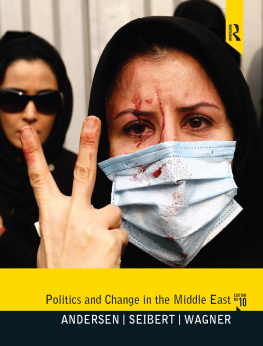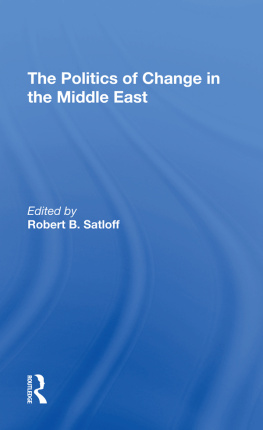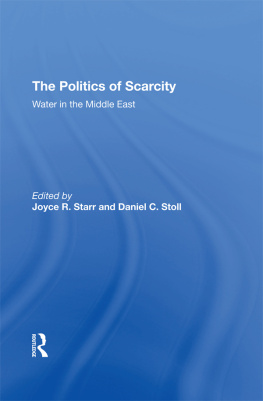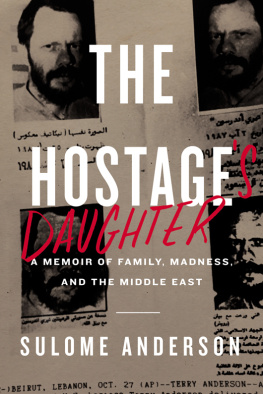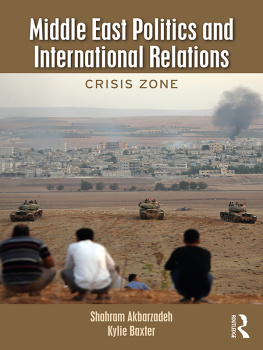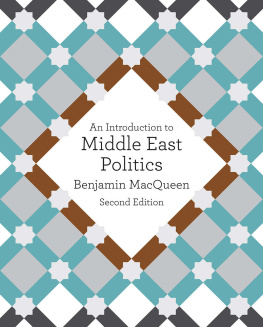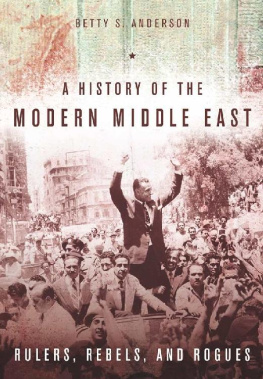As we begin the revisions necessary to our tenth edition, we are struck as authors by the range and intensity of changes that have occurred in the Middle East and the outside world during the 30 years since the publication of our first edition. Changes since 2008 require this new editionchanges that have been dramatic, often violent, and certainly fraught with future consequences.
We are also struck by how different the challenges in 2010 are from the changes that required our ninth edition. The single-most important event necessitating this new edition is the election in November 2008 of Barack Obama as president of the United States. Obamas election signaled a sea-change in the philosophy and conduct of U.S. foreign policy generally and toward the Middle East specifically. Obama replaced the neoconservative unilateralism of the Bush Administration with a realist multilateralism. The specific changes in policy are substantive and in many cases dramatic. We address the implications of this change throughout the portions of the text dealing with contemporary issues.
The old bipolar world is definitely gone. It has been replaced by a more fluid international system with a less than dominant superpower. The same observation also applies to the Middle East itself, where tensions between neighbors continue to color political relationships. Syrias abrupt withdrawal from its 30-year occupation of Lebanon has created complications of its own. Syrias neighbor to the south, Iraq, complains that jihadists routinely cross the Syrian border into Iraq. Israel sees Iran as a real danger to its security, and Iran, under the leadership of its president, Ahmad Amadinejad, threatens Israel with destruction. Jordan, Egypt, and Saudi Arabia have been the targets of serious terrorist attacks. The list goes on and on.
NEW TO THIS EDITION
As we look at the Middle East in 2010, we are confronted with a different series of challenges, some of them specific to the Middle East; others clearly are more global in character. Among the substantive political challenges for the tenth edition, we note:
An important series of elections, beginning with the late 2008 U.S. presidential election
The Obama Administrations change in the conduct of U.S. foreign policy
The 2009 parliamentary elections in Israel, which brought an unprecedented right-of-center coalition into power, with contingent changes in foreign policy
The 2009 Iranian presidential elections, which reversed Irans previous accomplishments at electoral democracy
The continued presidency of Mahmoud Ahmadinezad, the controversial and erratic leader of Iran
Irans continued movement toward nuclear capability
The Iraqi parliamentary elections of spring 2010, which had failed months after the election to organize a new government, adding measurably to the ethnic volatility of the country
All of this in the context of a global economic crisis of epic proportions
All of these changes, mind you, occurred during the normal course of political events in the countries and cultures of the Middle East. Therefore, we have embarked on a tenth edition, marking over 30 years of political change. Any smaller combination of these events would argue for a new edition; taken together, they require it.
FEATURES
Fortunately, not all of these changes, as important and dramatic as they are, compel us to abandon all previous lines of research and analysis. Our original paradigm of political conflict and accommodation, combined with the thematic analyses of the area (culture, history, economics, social systems, religion, and, of course, politics), has proved sufficiently flexible. We emphasize here that our thematic approach to analysis differs dramatically from the more common and conventional country studies that treat these issues in a fragmented and piecemeal way.
An important feature added to this new edition is a Glossary appearing at the back of the book. This tool will help the reader in reviewing the various key terms and words used in the countries of the Middle East.
We have directed our writing to an undergraduate audience not specifically acquainted with the Middle East. In addition, we have made every effort to avoid disciplinary jargon, arcane theoretical concepts, or other devices that would necessitate a sophisticated background in any of the social sciences. This is not to say that we do not introduce any special concepts or terms, but we do so only as necessary, and we do it as painlessly as possible.
Our thematic pedagogy is apparent in the organization of the book and in the particular sequence of chapters. We begin with a series of chapters designed to acquaint the student with the necessary fundamentals regarding the history and cultures of the area. We remind everyone here that the subject matter of these chapters is opaque and distant to most readers seeking an introduction to the area. It is important that a thematic treatment of the Middle East begin with this information. The particular introductory chapters are featured here:
: Traditional Cultures of the Middle East. This chapter introduces the area and argues for its importance in the development of world civilization.
: The Foundations of Islam. Islam is possibly the single-most influential factor in the ancient and modern Middle East. A basic familiarity with the history and tenets of this major monotheistic religion is very important to an understanding of salient issues in the contemporary Middle East system.


